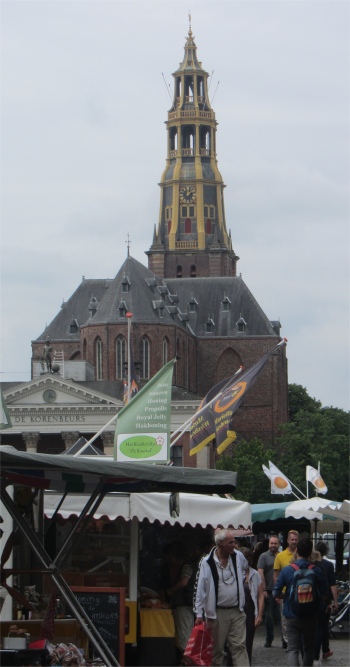Over breakfast he Googled Frank Havik, and found he had participated in several World Flying Dutchman Championships around the world, also winning in Florida in 2006.
We needed to spread our net further to stop us going insane. Rex was already babbling incoherently as his guilt complexes bubbled to the surface; he was still unduly concerned about our extended stay in Harlingen due to his back. Thus, we caught a train to Leeuwarden, and then caught another train across to Groningen, a charming place we had visited in 2013.
The city was founded on the northernmost point of the Hondsrug area. The oldest document referring to Groningen's existence dates from 1040. However, the city already existed long before then: the oldest archaeological traces found are believed to stem from the years 3950-3720 BC, although the first major settlement in Groningen has been traced back to the 3rd century AD.
In the 13th century, when Groningen was an important trade centre, its inhabitants built a city wall to underline its authority. The city had a strong influence on the surrounding lands and made its dialect a common tongue. The most influential period of the city was the end of the 15th century, when the nearby province of Friesland was administered from Groningen. During these years, the Martini Toren was built, which loomed over the city at (then) 127m tall, making it the highest building in Europe at the time. The city's independence came to an end when it chose to join forces with the Spanish during the Eighty Years' War in 1594. It later switched sides, joining the Republic of the Seven United Netherlands.
In 1614, the University of Groningen was founded, initially only for religious education. In the same period the city expanded rapidly and a new city wall was built. That same city wall was tested during the Third Anglo-Dutch War in 1672, when the city was attacked fiercely by the bishop of Münster, Bernhard von Galen. The city walls resisted, an event which is celebrated with music and fireworks on 28th August (as "Gronings Ontzet" or "Bommen Berend").
The city did not escape the devastation of World War II. In particular, the main square, Grote Markt, was largely destroyed in April 1945, at the Battle of Groningen. However, the Martini Toren, its church, the Goudkantoor, and the city hall were not damaged. The battle there lasted several days.
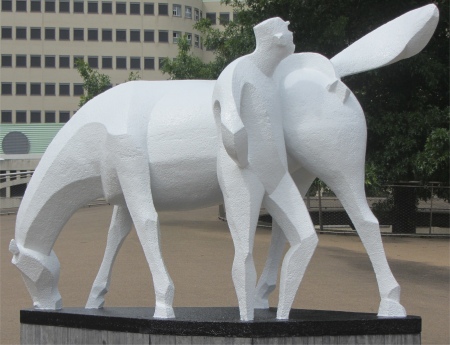 Peerd van Ome Loeks (Uncle Loek's Horse) |
Speaking of bikes, on the Stationsweg next to the Verbindinskanaal a long line of bikes was parked in standard bike racks. We paused for a while on the bridge over the canal to watch a floating pontoon with a small crane on it which was moored directly in front of this shore based bike park. Its crane would drop into the canal, and pull up bike after bike. Now whether the bikes had accidently fallen from the bike park into the canal, or they had been thrown in, I'll never know.
 Korenbeurs (Corn Exchange) |
 Goudkantoor |
 Stadhuis |
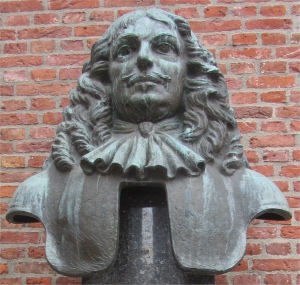 Rabenhaupt |
 17th/18th Century Facades in the Grote Markt |
 Old Renaissance Court, Now a University Faculty |
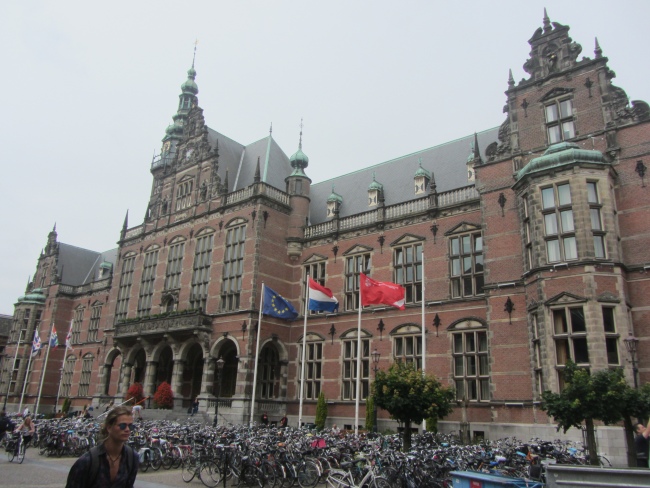 Academiegebouw (Academy Building) |
Passing by the Harmoniecomplex, which included two university faculties, we meandered down Turftorenstraat and arrived by a canal at Hoge der A. Here, numerous red-brick warehouses around the old Aa harbour were reminiscent of the fact that Groningen was an important commercial and Hansa town in the Middle Ages. This was also the location of various breweries that produced kluinbier (Groningen beer), an important export. Most buildings have been converted into dwellings or offices. In winter, it functions as the mooring for ships of the "bruine vloot" (brown fleet). The canal here was part of the standing-mast route which ran through the city. We watched a yacht pass through a swing bridge, then stood in awe as hundreds of cyclists, who had been detained by the barriers, hurtled across the bridge, together with cars, trucks, buses and pedestrians. It was a miracle no one was injured.
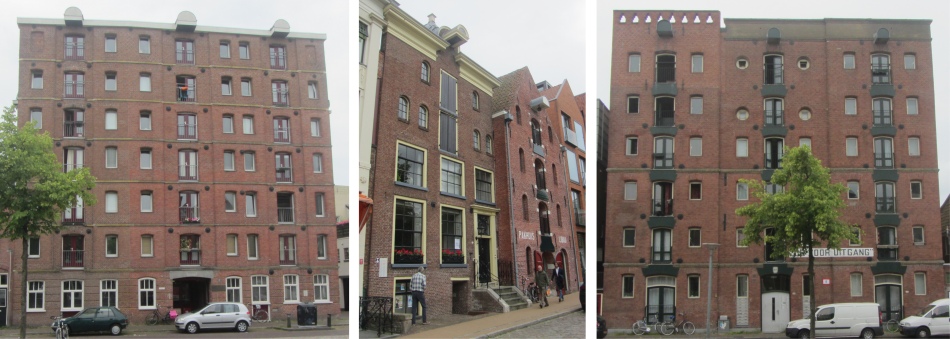 Old Warehouses at Hoge der A |
In addition, an animation film of medieval Groningen "Groningen in 1470" continuously looped in one of the rooms. It offered a unique, virtual reconstruction of the late Middle Ages city of Groningen. All buildings (over 1100 in total) were digitally reconstructed using the latest techniques and based on the latest scientific insights. The animated characters and the use of shadows and background sounds make a realistic image of the medieval city, enabling the 20-minute film to give us a tour of Groningen in 1470.



